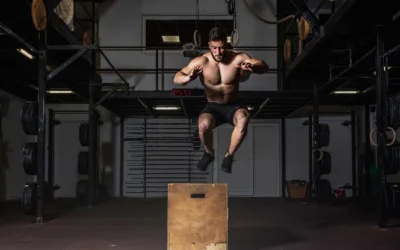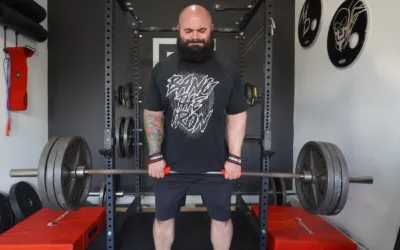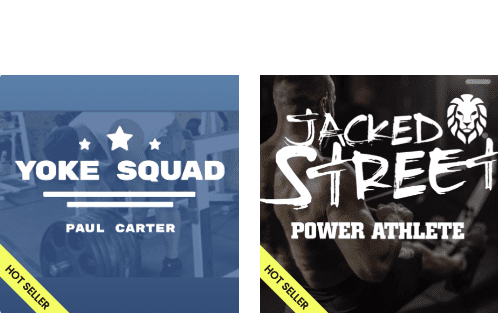Slow Reps vs. Fast Reps
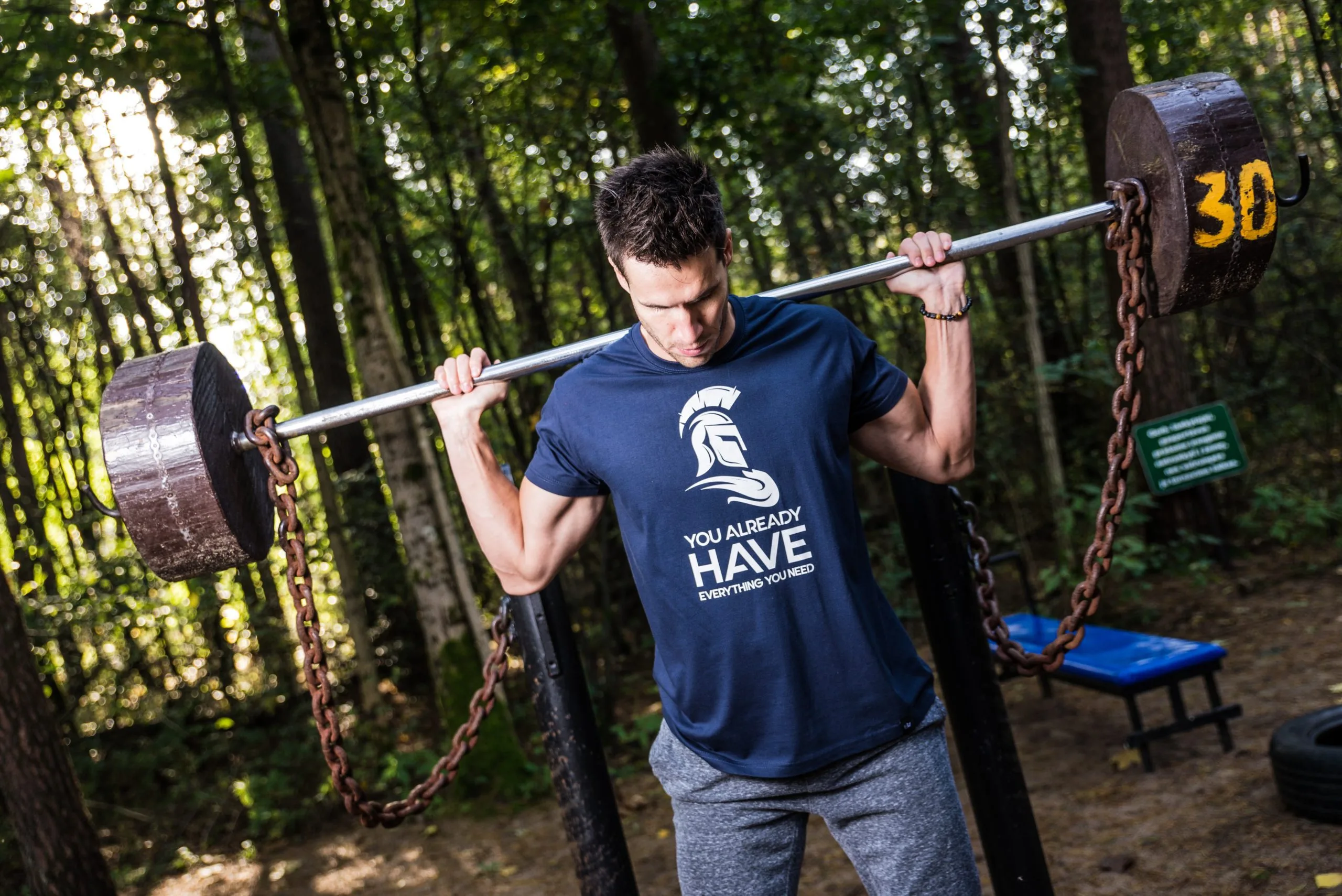
You’ve probably noticed that some people in the gym tend to perform their reps as fast as possible, whereas others take a slow and controlled approach. But which approach is better?
Dr. Andy Galpin is a Professor of Kinesiology at the Center for Sport Performance at California State University, Fullerton. Andy has a Ph.D. in Human Bioenergetics and is the founder and director of the Biochemistry and Molecular Exercise Laboratory. He’s the co-author of Unplugged with Brian Mackenzie and Phil White. He also co-hosts the Body of Knowledge podcast. Learn more at www.andygalpin.com
In this article Dr. Andy tells us why that may be the wrong question to ask yourself. Instead you should determine what your specific goals are in order to pick which rep style suits you best.
Dr. andy galpin

Change the Way You Train
Are Fast or Slow Reps Best? Wrong Question.
If you dig into Instagram, Twitter, Reddit, or one of the other corners of the internet in which people get way too serious about everything, you’re likely to come away confused over whether fast repetitions or slow ones are best.
But like many questions I’m asked, “fast or slow?”
This is really putting the cart, apples, and horse in the wrong order. There are several other queries you should pose to yourself or your coach before asking this one. I advise people to start with “What are you trying to achieve?”
First, because only when you know where you’re heading can you plot a course to get you there.
Next, you can progress to pondering training age/competency, injury history, load management considerations at different points in the competitive calendar, and so on.
But for the sake of argument and assuming that you’ve taken a crack at evaluating these factors beforehand, let’s dive a little deeper into the fast vs. slow debate in a way that can help you improve your programming and outcomes.
Some coaches will tell you that you need to primarily train slowly and deliberately, whereas others take the opposite stance and advocate going hard and fast, believing that if you train slow, you play slow.
Who’s right?
Slow Reps vs. Fast Reps — It All Depends on Your Goals
Again, it’s context-dependent and there is no absolute right or wrong answer. Having already given you my stock “it depends” answer to the “Should I lift fast or slow?” question, there are some lines of best fit for either (or sometimes, a combination of both) that can inform your decision making.
Once you’ve figured out what your goal is and why you’re doing the exercise in question – such as a biceps curl, front squat, or deadlift – in the first place, then you’ll be better informed about whether going fast or slow is the best approach.
The simplest way to move forward from here is to run through six typical aims that you might have for your strength and conditioning training, and for me to stop hedging my bets and tell you whether fast or slow is typically better in this use case.
Skill Development
Here, you’re looking to acquire a new skill or develop an existing one. I think it’s important to do some meaningful work at each of the three main speeds. You’ll want to do some reps slowly to demonstrate that you have sufficient movement literacy to perform the exercise with correct technique, sequencing, and control.
The same goes for going at normal speed. But we rarely see someone do an exercise or drill slowly and then preserve the same mechanics when applying greater velocity or having to handle additional load. For example, you could do all the slow stepping/striding drills you want, but when you take off in an all-out sprint, your form is likely to change.
So you do need to also practice motor patterns at speed.
Speed and Power
The next adaptation aim is speed and power. The latter is simply force times velocity. Assuming you’re doing them with good technique, then do them as fast as possible. If you want to go fast, you need to train fast. If you want to jump high in a game, you need to practice doing so.
If you have the skill down and technique honed, you can even use overspeed training, which we’ll discuss in detail in a future post.
Strength
Developing strength which, at its most basic level, is simply mass times acceleration equals force, requires both slow and fast reps.
Accelerating improves force production, so it’s good to do some speed work. You can also hold lifts in different positions to increase time under tension, so try adding in pauses in your pull-ups, squats, etc., on occasion.
Slow eccentric contraction requires an awful lot of force production and can allow you to move more weight than exercises requiring quick concentric contraction, and so can help you develop strength.
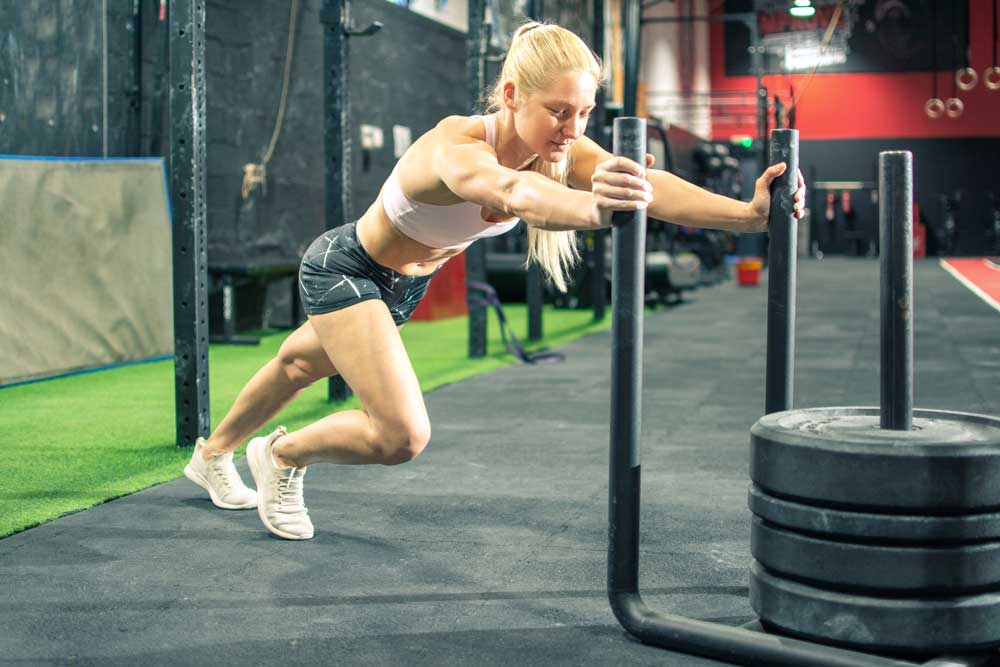
Hypertrophy
If you’re trying to build muscle, then normal to slow speeds are what you’ll typically want to focus on. That’s not to say there’s no place for fast reps, but there are several conditions that need to be present to induce hypertrophy that are more likely to come to bear when you’re doing slow or normal speed reps.
Again, I’ll do a future piece that specifically focuses on how to build muscle, along with busting some common myths. But in the meantime, if muscle gain is what you’re targeting, I’d suggest performing most of your reps slowly or at a normal, mid-paced tempo.
Fat Loss
It doesn’t really matter because what we’re really talking about here is more about calorie intake and expenditure and other factors outside the scope of this article. But as a general rule of thumb, I’d advocate a combination of both fast and slow reps.
Endurance
What type of endurance are we talking about? Aerobic or anaerobic? The ability to sustain high power output for a long time? Muscular endurance?
You could make a case for utilizing all three speeds. Wall squats with long holds would help you build endurance, but so would doing 100 unweighted glute bridges without stopping. Experiment a little and get a coach to help you match speed/tempo to your specific endurance goal.
Health
Do a combination of all three speeds, as overall wellness involves all of the aims/desired outcomes (improved endurance, hypertrophy, skill development, speed and power, and fat loss) listed above.
To summarize, begin by defining your end goal, and then work backwards from there to determine which of these six main qualities you want to target during any given training cycle.
Next, apply the recommendations I just provided, while staying open-minded enough to change the variables if you’re not getting the results, changes, or improvements that you’re seeking.
Find Your Perfect Training Plan
Sometimes all you need to reach your destination on your fitness journey is an expert guide. We've got you covered. Browse from thousands of programs for any goal and every type of athlete.
Try any programming subscription free for 7 days!
Related articles
Top 6 Exercises for Managing Shoulder Injuries
What to Do for an Injured Shoulder After 6 years of coaching at the highest levels across multiple disciplines, the most common issues I see in my sports therapy clinic have to do with the shoulder. Statistics show us that shoulders are the most commonly injured area...
Ballistic vs. Plyometric: Understanding Dynamic Movements
Have you heard the Russian proverb, “once you stop jumping, you start dying”? A little dramatic and fatalistic maybe, but the basic idea centers around maintaining your body’s capacity to perform explosive plyometrics. As we age, we become more risk-averse — injuries...
Winter Warfare: How to Bulk Up This Season
It’s that time of the year to wreak havoc and prepare for a massive winter bulk! But wait, what is a winter bulk? What does it take, and how do we achieve it? Joseph Lucero (CSCS), owner of Harvesting Strength, is a powerlifter and strongman coach with years of...

Join the community
Sign up for the latest training news and updates from TrainHeroic
Support
Made with love, sweat, protein isolate and hard work in Denver, CO
© 2023 TrainHeroic, Inc. All rights reserved.


